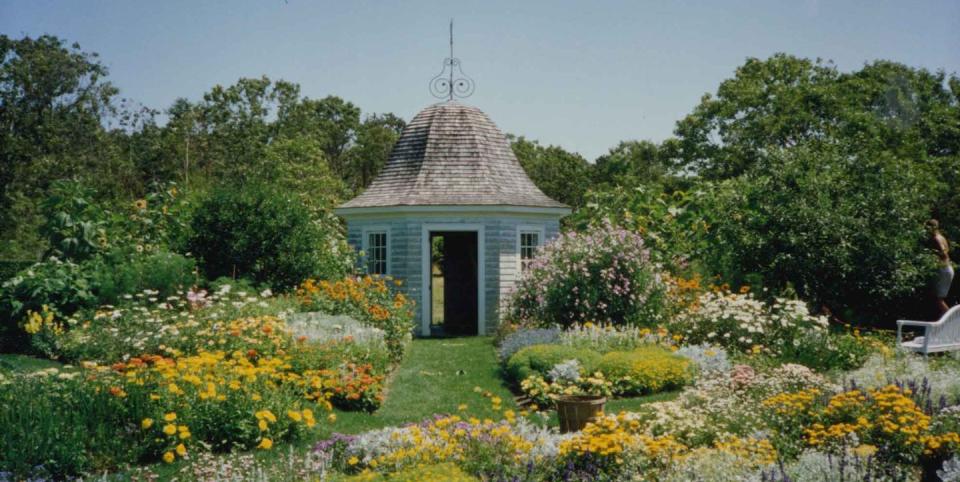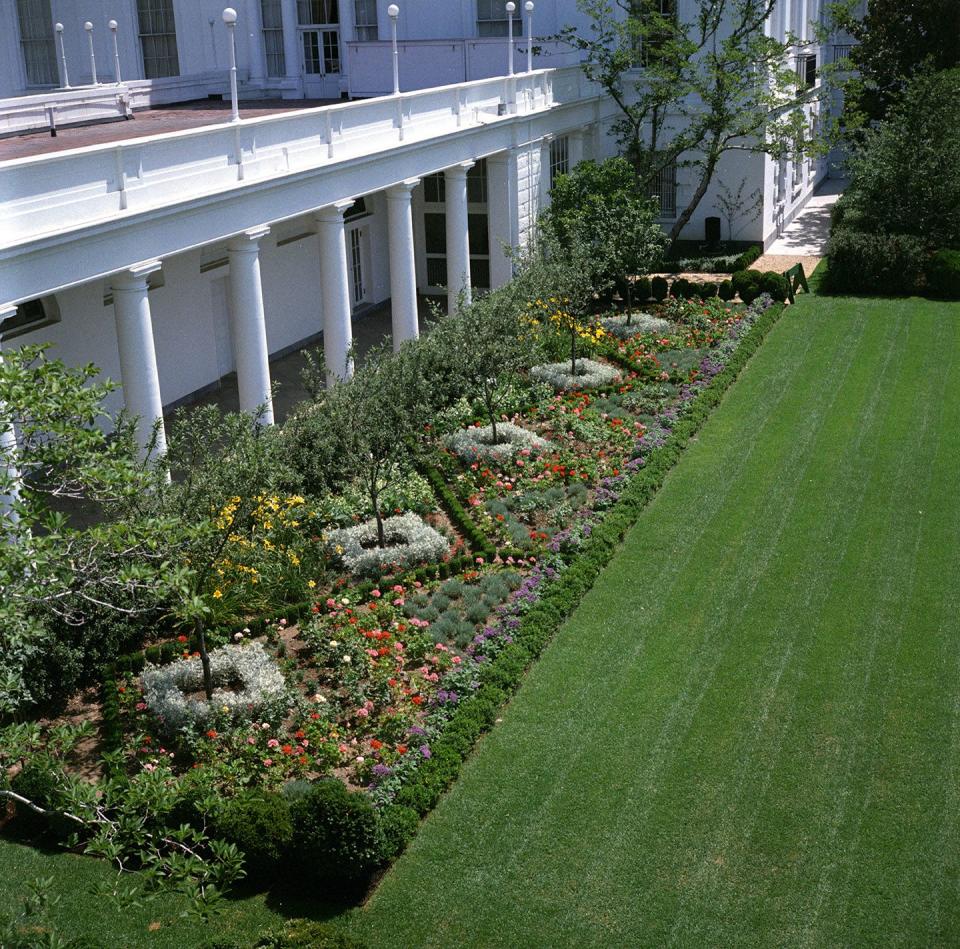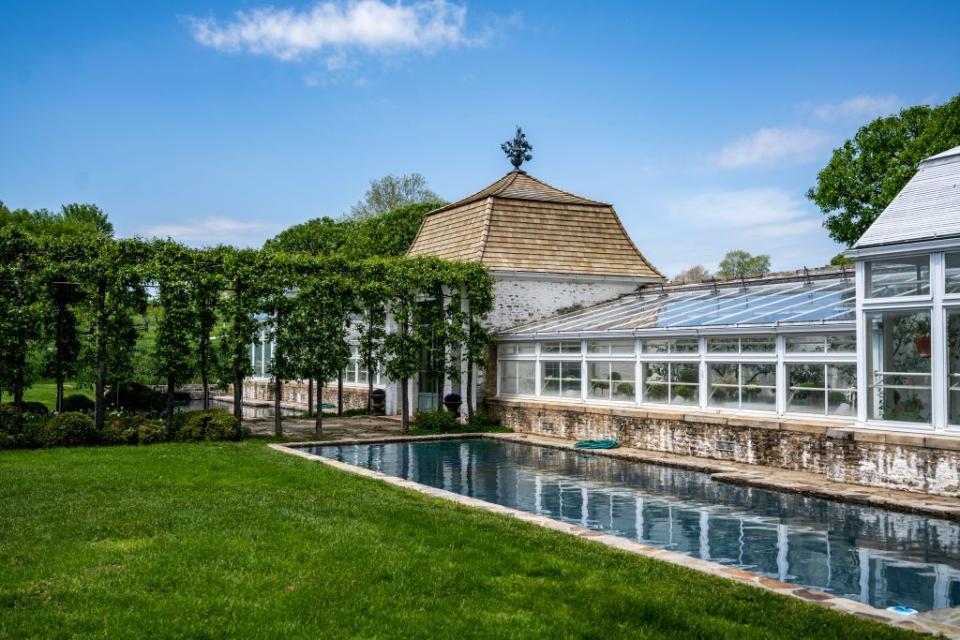The 3 Most Valuable Lessons From One of History’s Most Famous Gardeners

“Hearst Magazines and Verizon Media may earn commission or revenue on some items through the links below.”
When you think of gardening greats, Bunny Mellon is probably one of the first (if not the first) people who comes to mind, and rightfully so! She famously transformed the White House Rose Garden during the Kennedy administration (and was a close friend to Jackie Kennedy), though that project was just one of her many botanical undertakings. Looking to learn more about one of the world’s most celebrated horticulturists? You’re in luck—Garden Secrets of Bunny Mellon hits shelves (and websites) today. And this isn’t author Linda Jane Holden’s first venture into writing about Bunny Mellon—she is also the force behind The Gardens of Bunny Mellon, which was published in 2018. This time around, Holden is joined by two co-authors, interior designer Bryan Huffman and Bunny Mellon’s grandson Thomas Lloyd, with a foreword penned by television host and garden designer P. Allen Smith.

The resulting book is a combination of personal anecdotes and valuable advice, much of it just as relevant now as in Mellon's time—and just as applicable if you're working with a modest plot or a grand formal garden. Below, House Beautiful has laid out some of the most valuable lessons we learned from Garden Secrets of Bunny Mellon, based on the timeless creations of the mastermind herself and her own writings in her garden journals. Happy reading and happy gardening!

Spend Every Day in the Garden
One standout story in Garden Secrets of Bunny Mellon is the tale of when socialite Babe Paley and her husband, CBS founder William S. Paley, spent a few days at Bunny Mellon’s Oak Spring farm in Upperville, Virginia. During this trip, Bunny advised Babe that, in order to become a good gardener, she would have to spend every single day in the garden at hand. In response, Babe retreated to her home in New York and sent her gardener to Oak Spring in her place. Needless to say, gardening isn’t for everyone, but it was certainly a lifelong passion for Mellon. Even in the wake of President John F. Kennedy’s assassination, she carried on with her work at the White House Rose Garden—pulling weeds, pruning trees, and providing advice to later presidents and first ladies, and fellow White House Gardeners. Mellon understood the importance of experience, and learning firsthand what works best: “No matter how you start, you will change your ideas with experience," she said. "If you are sincerely interested in the subject, experience will carry you along. Sometimes with disappointments, but they too sharpen and further your knowledge as you search for a replacement or another approach.”

A Garden Should Be Planned as a Whole
Mellon felt that the best way to plan a garden is to do so as a whole, rather than in segmented parts: “You may never complete your plan for twenty years, but if every bit of effort you put in is working toward the completion of a plan as a whole, you save both time and money.” Garden Secrets of Bunny Mellon details a specific list of steps to help you plan your garden:
Make a list of the “problems” you wish to hide (such as a a water pump or hose)
Make a list of the items or things you want to have in your garden (ie. a vegetable garden or a tool house)
Measure and record the length of your garden, your house, and the garden paths you want or already have (and anything else you think is worth measuring)
Outline the garden plan on a piece of graph paper
Use colored pencils to bring your sketch to life. Voilà! You should now have a tangible rendering of your luxuriant vision.

Balance Light and Shadow
“Light especially has a great influence on the mood. I will write about this one day,” Mellon once wrote in her garden journals, which serve as extensive records on her horticultural experiments. “Light is one of the most important things to consider.” Having a place to go to when you’re seeking shade (or sun!) is a paramount factor when planning out your garden—and a consideration to take for every season. For the hot summer months, there should be a place that offers shade, without compromising the lush scenery of vibrant flowers and flourishing trees; in the cooler months, sunshine can offer a much needed respite, so the shade of a tree isn’t as welcomed as it would be in the summer.
Follow House Beautiful on Instagram.
You Might Also Like

